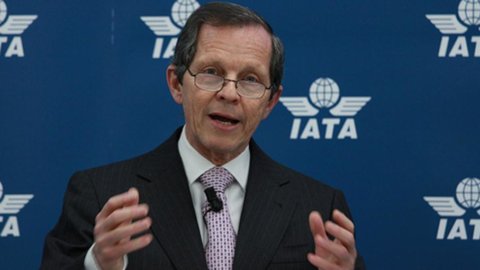The International Air Transport Association (Iata) has recently shown for the first time in Singapore a new airport checkpoint model designed to improve security checks and reduce queues and searches at airports, applying measures based on the risk profile. $7,4 billion is spent on aviation safety worldwide each year, but by far the most publicized aspect of this effort is the inconvenience it causes to passengers. Instead, says the general manager and outgoing managing director of Iata Giovanni Bisignani, those who fly should be able to approach the boarding gates in a dignified manner. Without having to unpack, stop, undress and, above all, without having to be searched. “We need to make coordinated investments to be able to fly in a civilian way,” Bisignani said. The new checkpoints proposed by Iata are based on strengthening security by concentrating resources where the risk is greatest; in maintaining a risk-based approach thanks to passenger information; in maximizing the smoothness of transactions for the vast majority of travelers who can be considered low-risk. “The current checkpoint – said Bisignani – was conceived 40 years ago to prevent hijackers from carrying metallic weapons. Later, more complex procedures were added to deal with new types of threats. Today we are safer, but it's time to rethink everything. We need a procedure that responds to today's threats, that amalgamates passenger intelligence information with new technologies. This means going from a system that looks for dangerous objects to one that can find dangerous people." The new controls are based on the notion that one method should not apply to all to ensure safety. Passengers approaching the new checkpoint will be directed to three different lanes: 'known traveller', 'normal' and 'enhanced security'. The choice will be based on a biometric identifier in the passport or other document that will reveal the passenger's government risk assessment before they arrive at the airport. The three security lanes will be equipped with technology capable of screening passengers based on their risk profile. "Known travellers" who have completed checks with the police authorities will have faster access. For most travellers, there will be “normal screening”. While for those passengers on whom less information is available or who are considered "high risk", there will be an additional level of checks. Also under development is screening technology that will allow passengers to pass through the checkpoint without unpacking or having to undress. In addition, an increasing integration between security and customs and immigration procedures is expected. Through the International Civil Aviation Organization as many as 19 governments, including that of the United States, are working to define the standards of the checkpoint of the future. http://news.xin.msn.com/en/singapore/article.aspx?cp-documentid=4913345
Iata presents a new airport security check model based on risk profiles
The "checkpoint of the future" will divide passengers into three categories: known, normal and high-risk. Bisignani: "We must move from a system that looks for dangerous objects to one capable of finding dangerous people"





